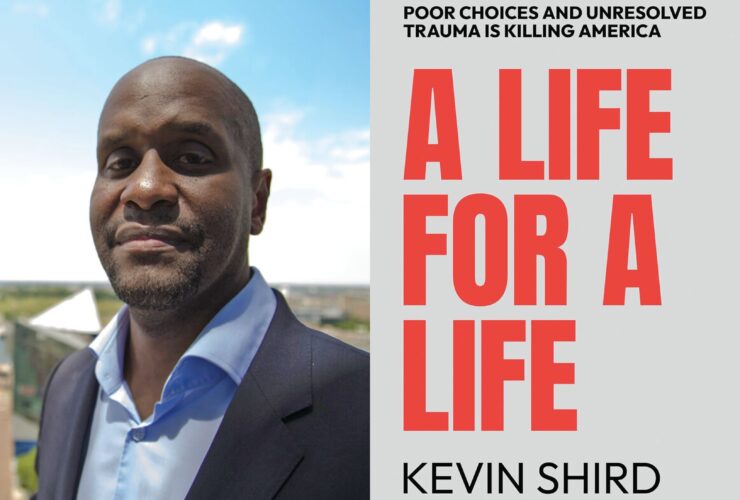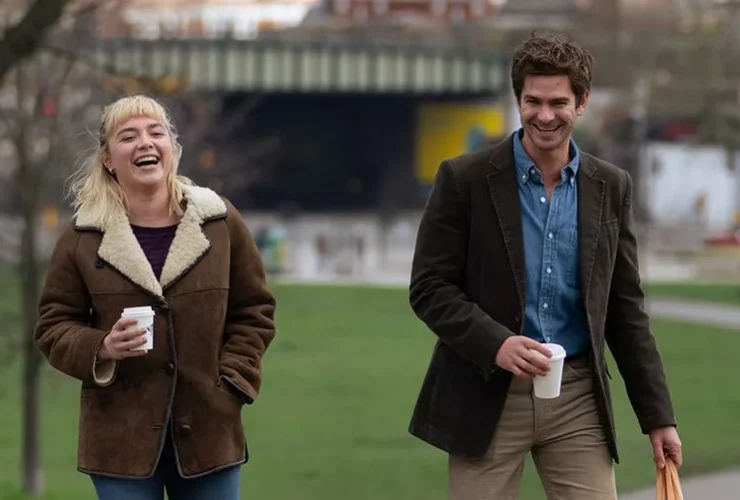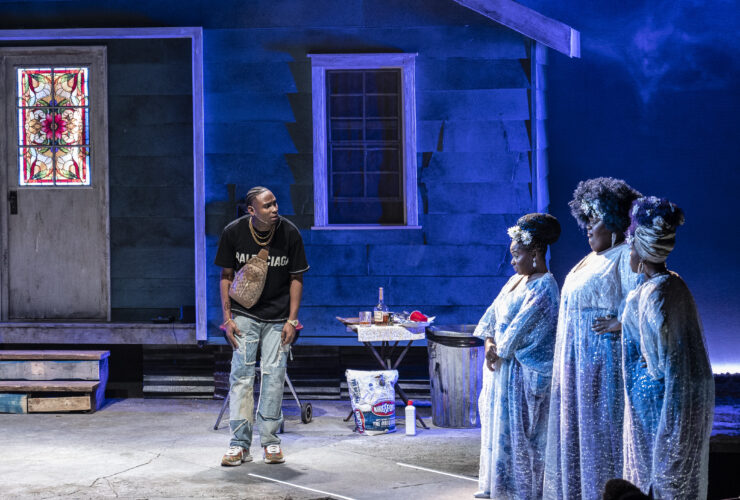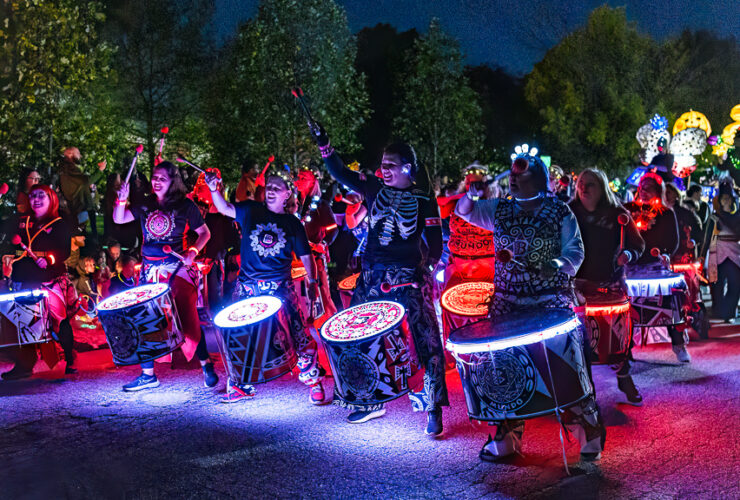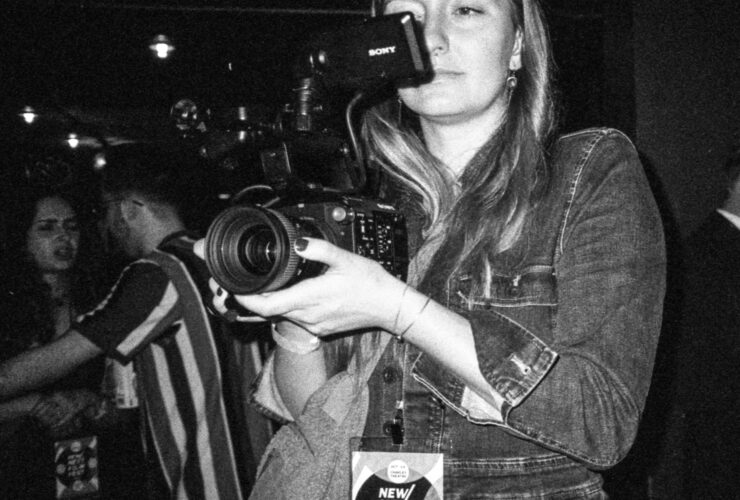
Arts & Culture
Looking for Love
After losing his daughter to an overdose, artist Peter Bruun is buoyed by ink, watercolors, and love.
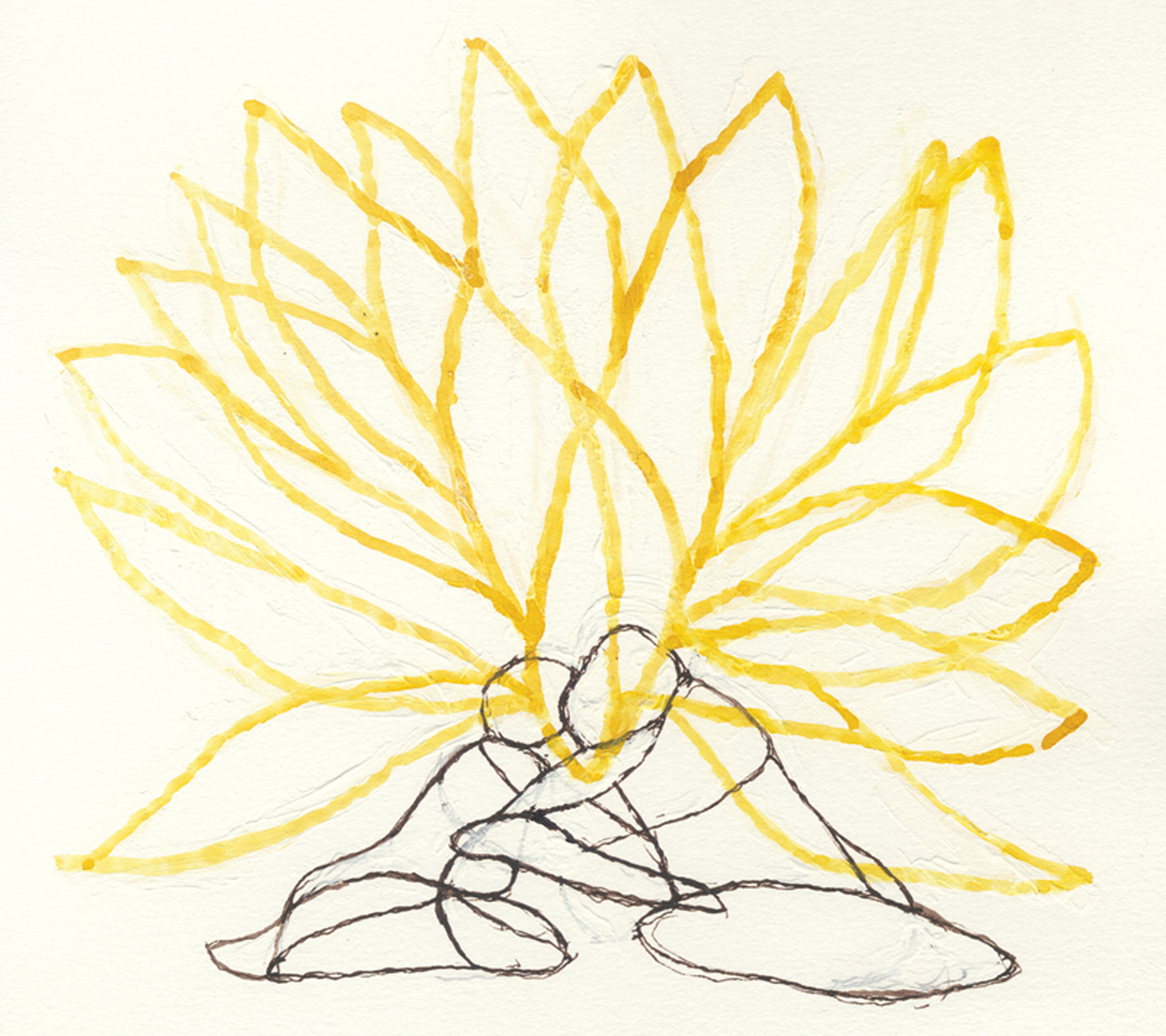
When their daughter Elisif died of a heroin overdose five years ago, Baltimore artist Peter Bruun and his wife, Serafina, were flooded with support. “Devastated as my wife and I were, we were inundated with love from every direction,” says Bruun. “We crowd-surfed our way on their love for months—and I don’t know how we could have gotten by without that.”
In fact, it’s been love that has turned his pain into purpose and was the genesis of his latest exhibition, “Beyond Beautiful: One Thousand Love Letters,” in which Bruun grapples with a new understanding of love and looks at the limitless ways to express it. The exhibit is on display at Area 405 and Maryland Art Place and will run through mid-March. By soliciting love letters from friends, and even using the words of historical figures as his muse, Bruun set out to explore—and draw—the many forms and faces of love. And not all of it is easy. From victims of sexual assault to a humorous love letter that Marlon Brando once wrote to a stewardess on a cocktail napkin, Bruun has found some catharsis through others sharing their stories. “I’ve always used my art to make sense of the world,” says Bruun. “After my daughter died, with everything turned upside down, I asked myself, ‘Why am I on this Earth?’ Her passing was a challenge to any reason I’d given myself in the past. Three years ago, I realized that I’m here to love. I’ve begun to consciously think about my art as a way to delve into love.”
Although Bruun admits that the act of visually rendering 1,000 letters has been a test of artistic endurance, the number is symbolic. “It’s a symbol of the infinite,” he says. “Like any marathon, you go to the water stop to refuel. Sometimes I’d get a new brush or new ink to spark my artistic interest beyond the letters, but, of course, the letters themselves kept me inspired.”
For this project, Bruun also has contributed several letters of his own. For letter number 264, he used as his inspiration a note he wrote to Elisif when she was in the throes of addiction. “I wrote about a litany of things that were pushing the love away,” says Bruun. “‘Stay with me. Go away from me. Shut me out. I still love you. Berate me. Praise me. Cut me to the quick. I love you. I love you.’” And though he says that he’s chronically healing, other people’s letters have helped ground him. “My relationships with people have taken entirely unexpected paths,” says Bruun. “The strangeness of my ride has felt disorienting. This project has affirmed the 1,000 forms that love can take. And there’s really nothing abnormal about this ride that I’ve been on.”
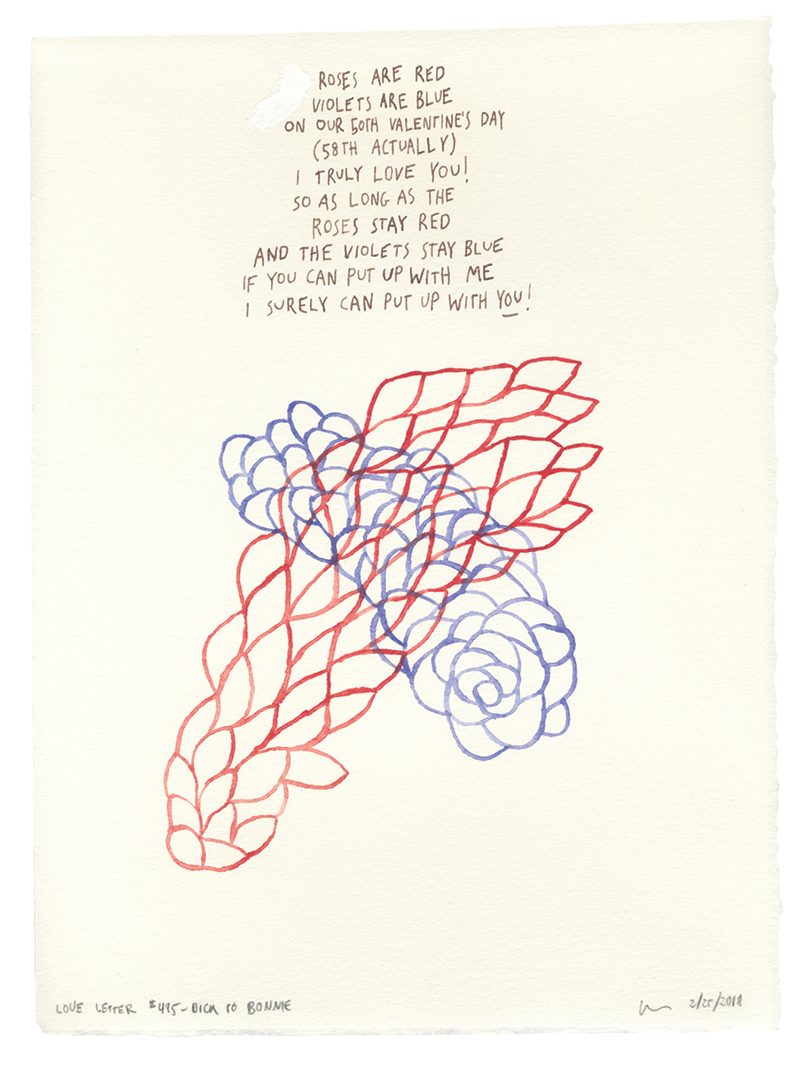
Number 495: Dick to Bonnie
This drawing is inspired by a Valentine’s day letter that York, PA resident Brooke Hoffman’s grandfather wrote to her grandmother, his wife of more than 50 years. The drawing, with its overlapping shapes, represents a symbol of long-lived love.
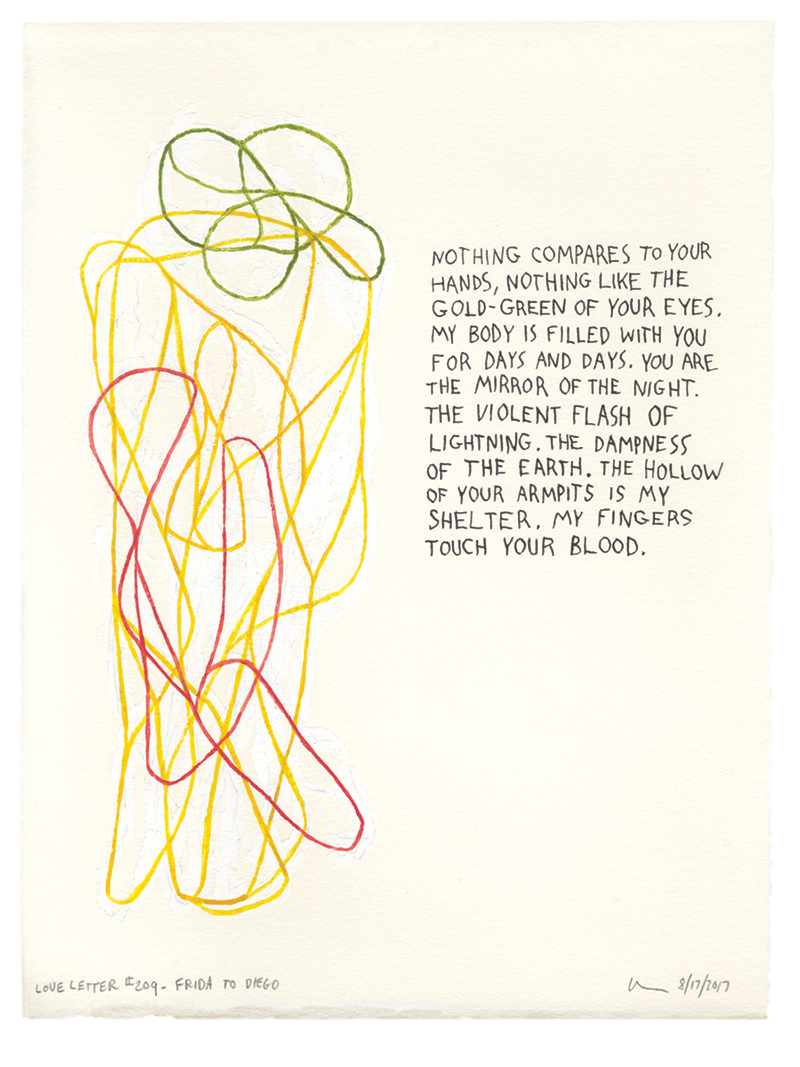
Number 209: Frida to Diego
This drawing is inspired by a letter from artist Frida Kahlo to her husband, Diego Rivera, a famed Mexican muralist. Throughout their long tempestuous relationship, each had affairs with others, and yet each continued to hold the other in the highest light.
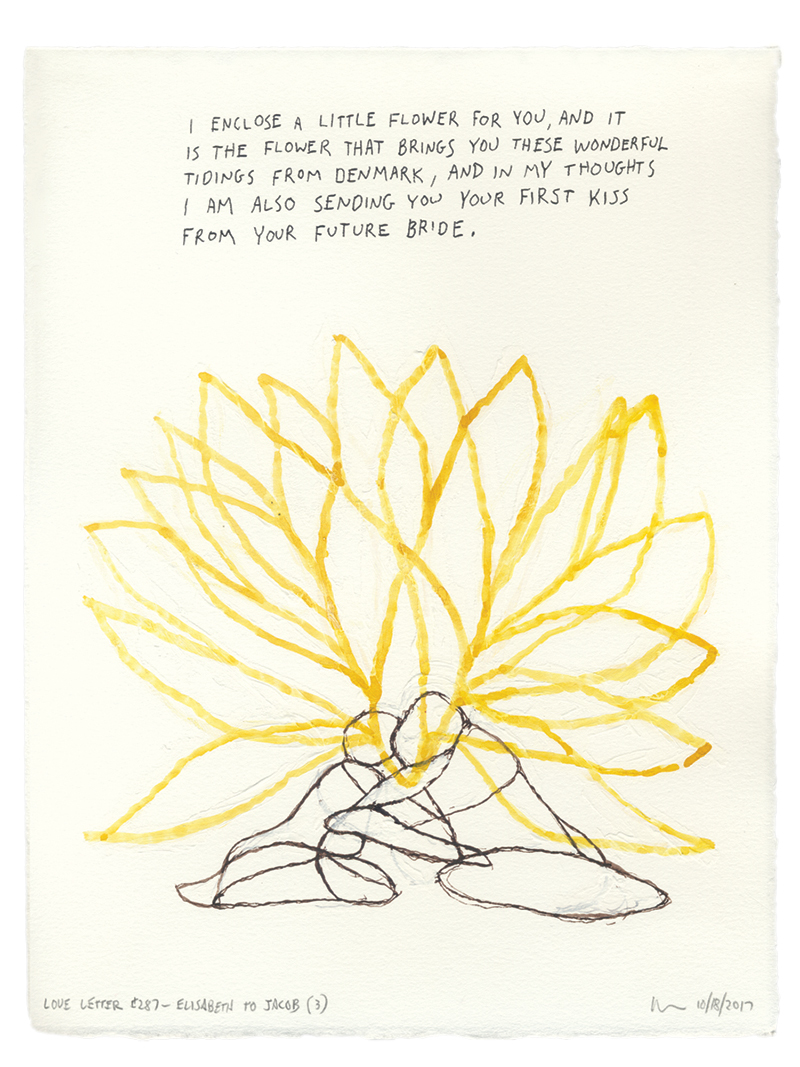
Number 287: Elizabeth to Jacob
Famed photographer Jacob Riis was a Danish immigrant who carried for years a lifetime love for childhood friend, Elisabeth Giørtz, whom he had courted unsuccessfully before coming to America in 1870. Twelve years later, she finally wrote from Denmark the letter Riis had been waiting years to receive.
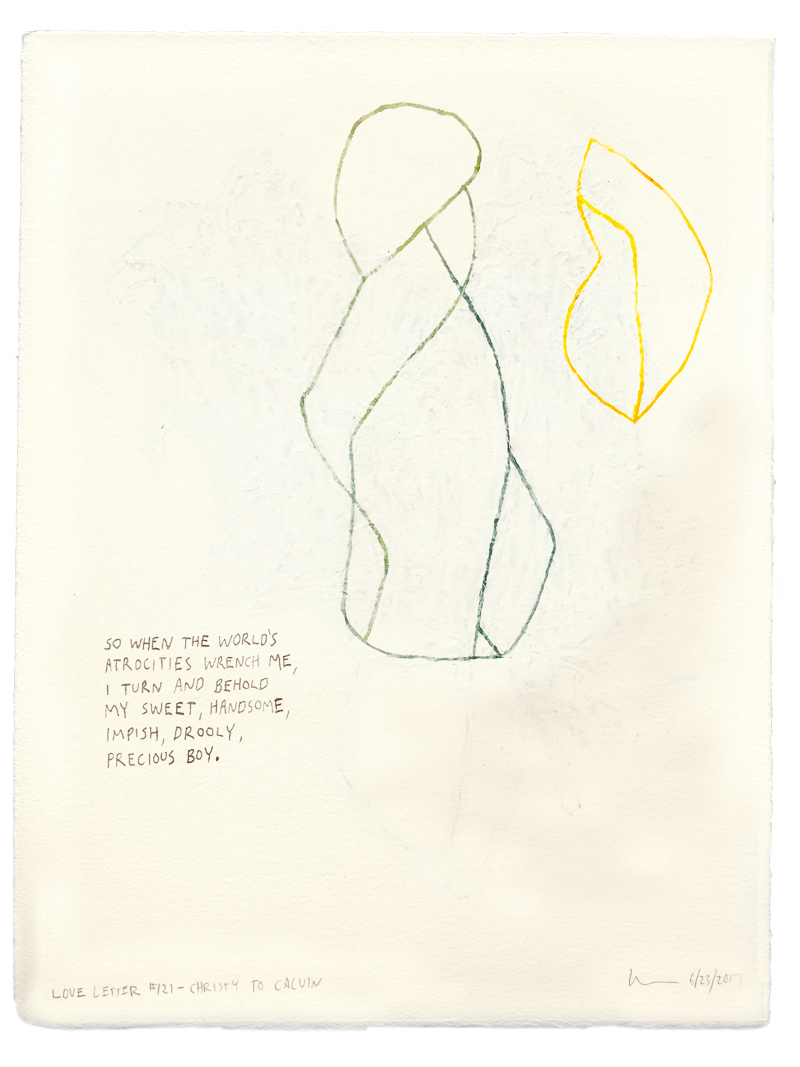
Number 121: Christy to Calvin
Christy has a son with a neurological disability, and she keeps a blog about him, so she is particularly mindful of the value of mothering and family. This drawing was inspired by Christy’s relationship with her son.
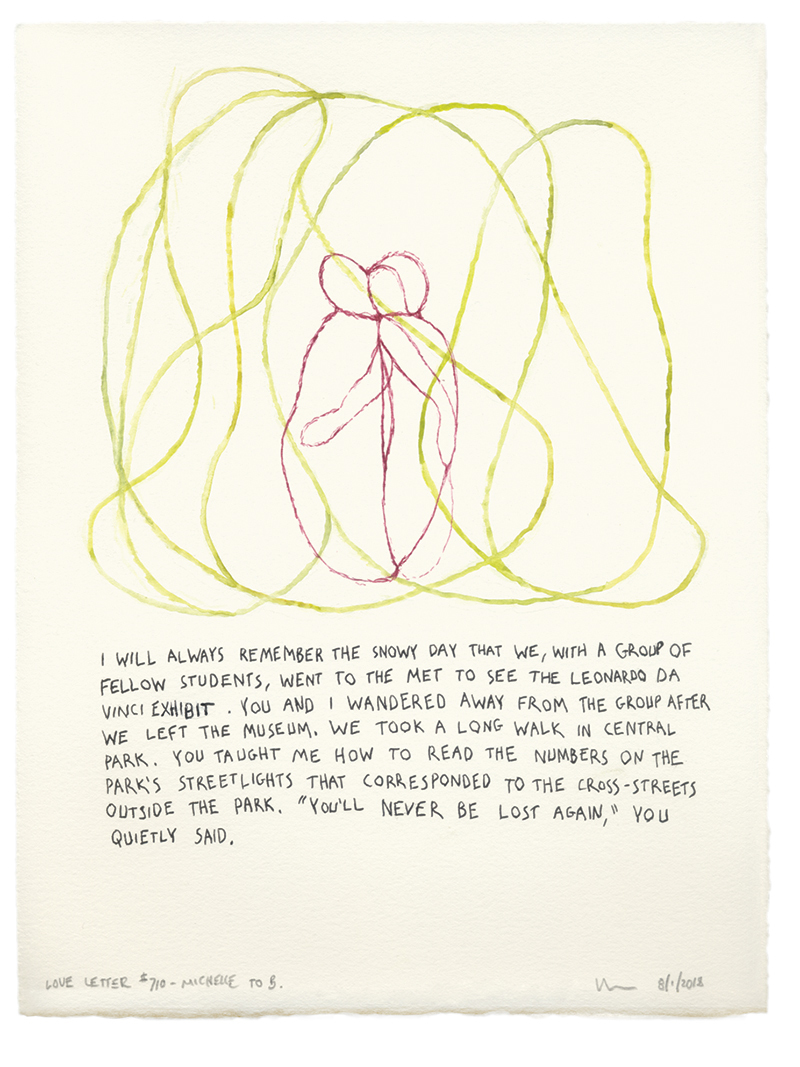
Number 710: Michelle to B.
In this drawing, Bruun draws two figures walking through Central Park arm in arm, depicting a moment between a woman and her husband. This is her love letter to him.
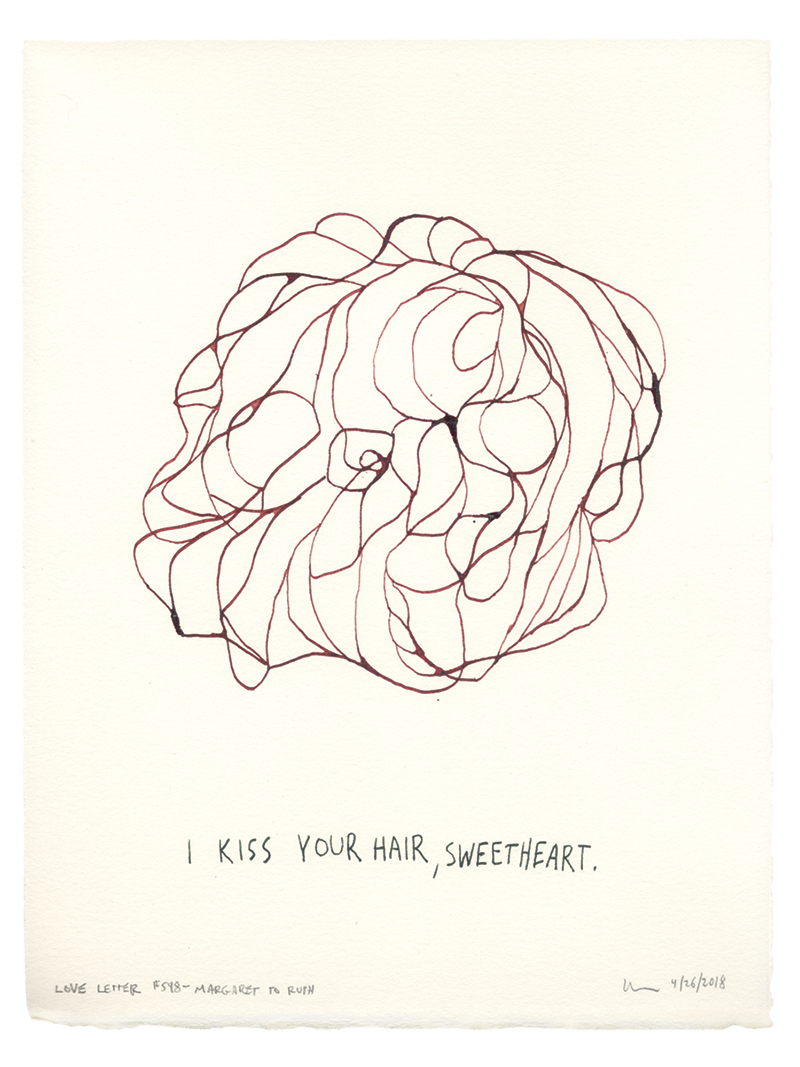
Number 598: Margaret to Ruth
The words of anthropologist Margaret Mead to her mentor and lover, folklorist Ruth Benedict, inspired this piece: “I was simply thinking of hair as a beautiful thing,” says Bruun.

Number 152: Abigail to John
Abigail and founding father, John Adams kept up an intimate relationship from long distance with countless letters, as she minded their home in Massachusetts—and he helped form a new nation. The letter inspiring this drawing was written on December 23, 1782, while the Revolutionary War still raged. In it, Bruun creates layered lines reminiscent of a fully grown and simply upright hedge—a metaphor for their marriage.
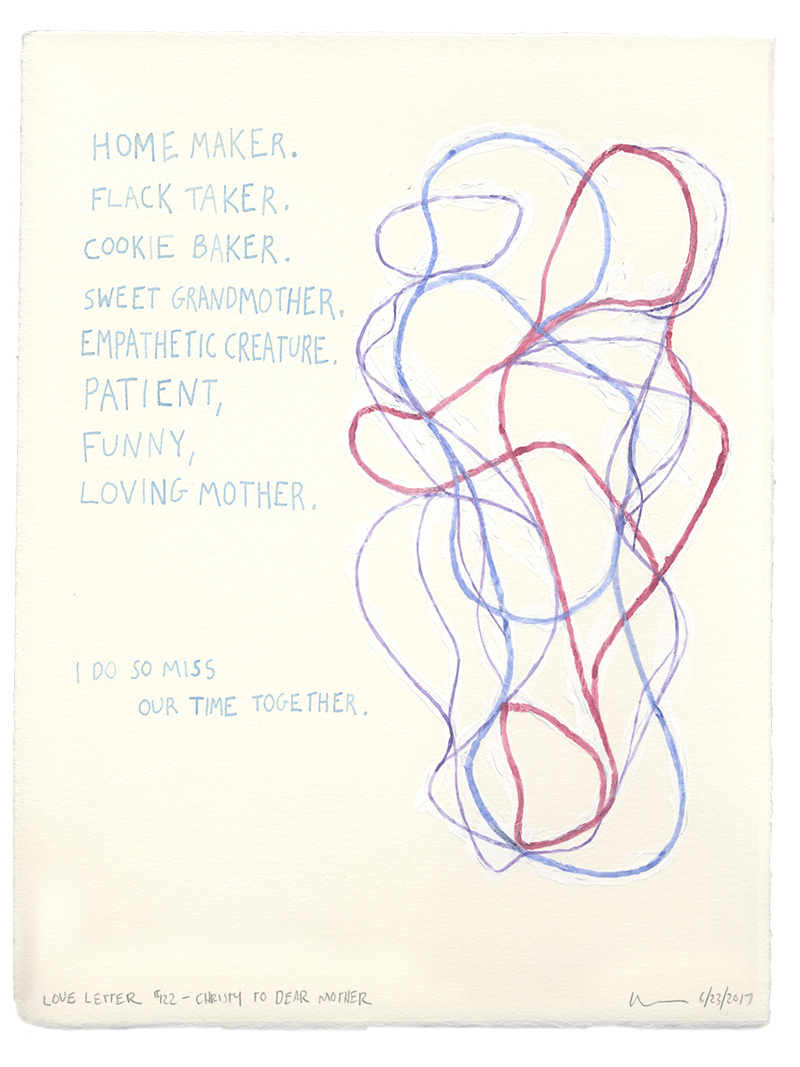
Number 122: Christy to Dear Mother
“I was thinking about two souls entwined as one, like mother-daughter—like veins and arteries taking and giving and receiving—like DNA strands wrapped,” says Bruun of this piece. The piece was inspired by a woman’s blog on the one-year anniversary of her mother’s death.
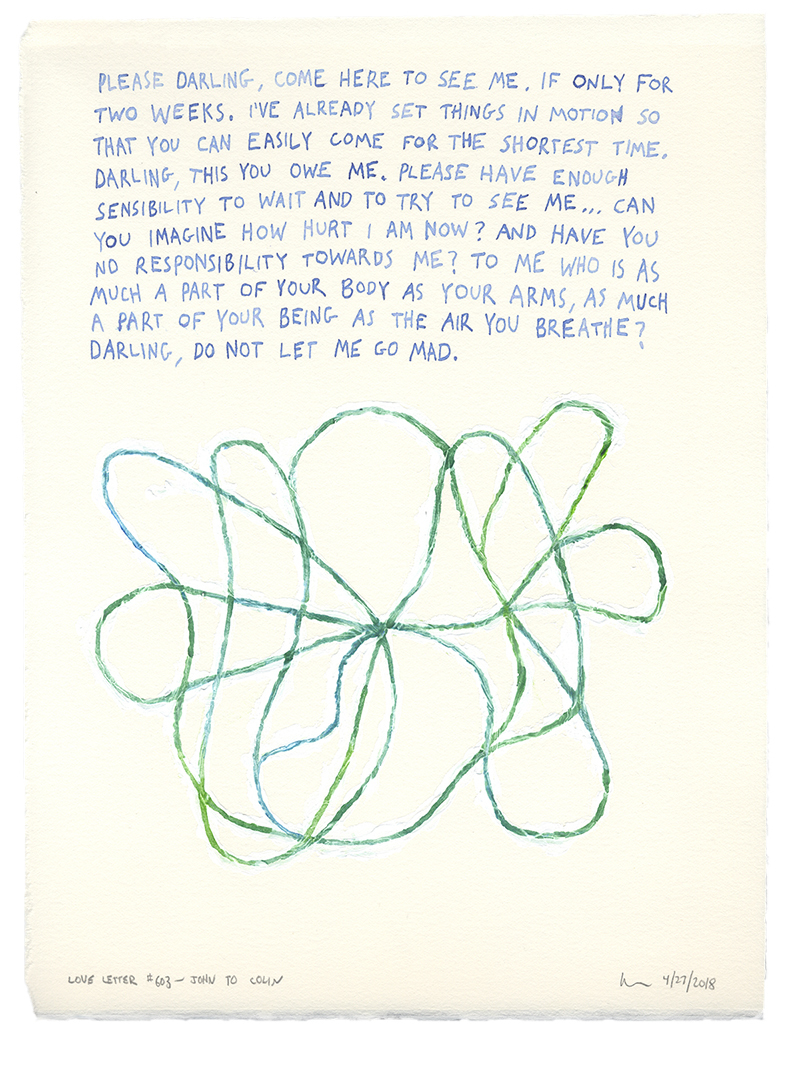
Number 603: John to Colin
This depiction was inspired by an excerpt from My Dear Boy: Gay Love Letters through the Centuries, edited by Richard Norton. Colin Spencer was a novelist who fell in love with theater director John Tasker. They exchanged passionate letters until Spencer married a woman and suppressed his love for Tasker.

Number 96: Dad to Beth
Beth Fredrick—who now lives in Baltimore and travels the world for her work with Johns Hopkins University Bloomberg School of Public Health—grew up on a farm in Wisconsin. This drawing is inspired by a postcard Beth received from her father shortly after moving East in the 1980s. “In this drawing, I was thinking of Beth as the abstract figure on the right, sitting tall and proud, as her father—on the left—reaches toward her, with all the warmth and verdant colors of farm country in his words.”
